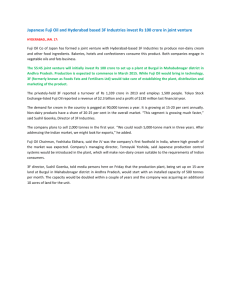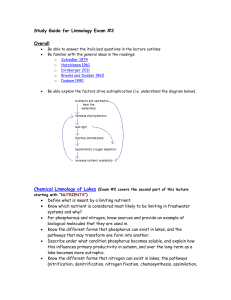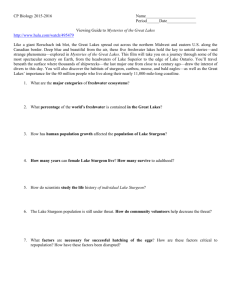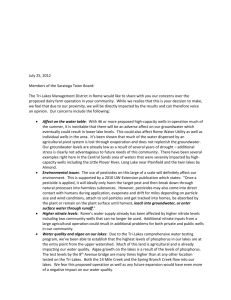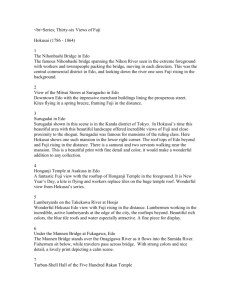Lamair et al. 2015_BELQUA_abstract_
advertisement
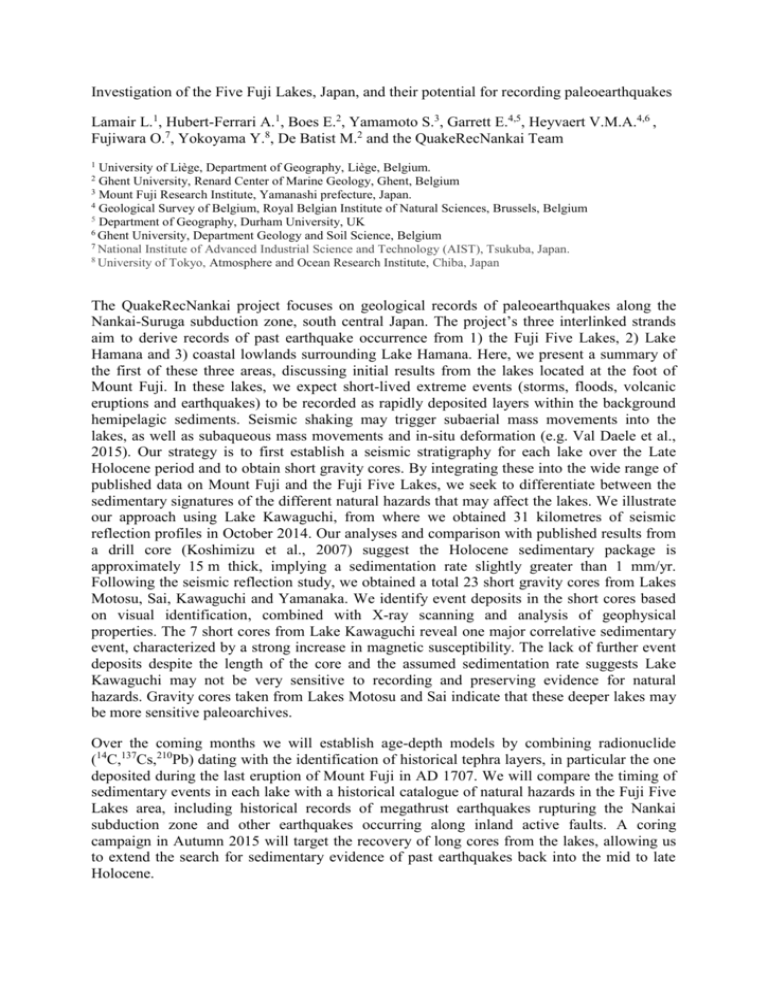
Investigation of the Five Fuji Lakes, Japan, and their potential for recording paleoearthquakes Lamair L.1, Hubert-Ferrari A.1, Boes E.2, Yamamoto S.3, Garrett E.4,5, Heyvaert V.M.A.4,6 , Fujiwara O.7, Yokoyama Y.8, De Batist M.2 and the QuakeRecNankai Team 1 University of Liège, Department of Geography, Liège, Belgium. Ghent University, Renard Center of Marine Geology, Ghent, Belgium 3 Mount Fuji Research Institute, Yamanashi prefecture, Japan. 4 Geological Survey of Belgium, Royal Belgian Institute of Natural Sciences, Brussels, Belgium 5 Department of Geography, Durham University, UK 6 Ghent University, Department Geology and Soil Science, Belgium 7 National Institute of Advanced Industrial Science and Technology (AIST), Tsukuba, Japan. 8 University of Tokyo, Atmosphere and Ocean Research Institute, Chiba, Japan 2 The QuakeRecNankai project focuses on geological records of paleoearthquakes along the Nankai-Suruga subduction zone, south central Japan. The project’s three interlinked strands aim to derive records of past earthquake occurrence from 1) the Fuji Five Lakes, 2) Lake Hamana and 3) coastal lowlands surrounding Lake Hamana. Here, we present a summary of the first of these three areas, discussing initial results from the lakes located at the foot of Mount Fuji. In these lakes, we expect short-lived extreme events (storms, floods, volcanic eruptions and earthquakes) to be recorded as rapidly deposited layers within the background hemipelagic sediments. Seismic shaking may trigger subaerial mass movements into the lakes, as well as subaqueous mass movements and in-situ deformation (e.g. Val Daele et al., 2015). Our strategy is to first establish a seismic stratigraphy for each lake over the Late Holocene period and to obtain short gravity cores. By integrating these into the wide range of published data on Mount Fuji and the Fuji Five Lakes, we seek to differentiate between the sedimentary signatures of the different natural hazards that may affect the lakes. We illustrate our approach using Lake Kawaguchi, from where we obtained 31 kilometres of seismic reflection profiles in October 2014. Our analyses and comparison with published results from a drill core (Koshimizu et al., 2007) suggest the Holocene sedimentary package is approximately 15 m thick, implying a sedimentation rate slightly greater than 1 mm/yr. Following the seismic reflection study, we obtained a total 23 short gravity cores from Lakes Motosu, Sai, Kawaguchi and Yamanaka. We identify event deposits in the short cores based on visual identification, combined with X-ray scanning and analysis of geophysical properties. The 7 short cores from Lake Kawaguchi reveal one major correlative sedimentary event, characterized by a strong increase in magnetic susceptibility. The lack of further event deposits despite the length of the core and the assumed sedimentation rate suggests Lake Kawaguchi may not be very sensitive to recording and preserving evidence for natural hazards. Gravity cores taken from Lakes Motosu and Sai indicate that these deeper lakes may be more sensitive paleoarchives. Over the coming months we will establish age-depth models by combining radionuclide (14C,137Cs,210Pb) dating with the identification of historical tephra layers, in particular the one deposited during the last eruption of Mount Fuji in AD 1707. We will compare the timing of sedimentary events in each lake with a historical catalogue of natural hazards in the Fuji Five Lakes area, including historical records of megathrust earthquakes rupturing the Nankai subduction zone and other earthquakes occurring along inland active faults. A coring campaign in Autumn 2015 will target the recovery of long cores from the lakes, allowing us to extend the search for sedimentary evidence of past earthquakes back into the mid to late Holocene. References: Koshimizu, S., Uchiyama, T., Yamamoto, G. (2007) Volcanic history of Mt Fuji recorded in borehole cores from Fuji Five Lakes surrounding Mt. Fuji. in Aramaki, S., Fujii, T., Nakada, S., Miyaji, N. (eds.), Fuji Volcano, Yamanashi Institute of Environmental Sciences, 365-374. Van Daele, M., Moernaut, J., Doom, L., Boes, E., Fontijn, K., Heirman, K., Vandoorne, W., Hebbeln, D., Pino, M., Urrutia, R., Brümmer, R., De Batist, M. (2015) A comparison of the sedimentary records of the 1960 and 2010 great Chilean earthquakes in 17 lakes: Implications for quantitative lacustrine palaeoseismology. Sedimentology, DOI: 10.1111/sed.12193


